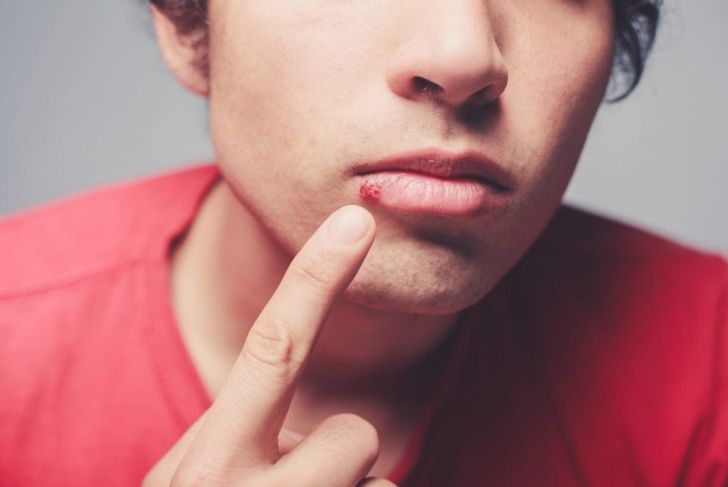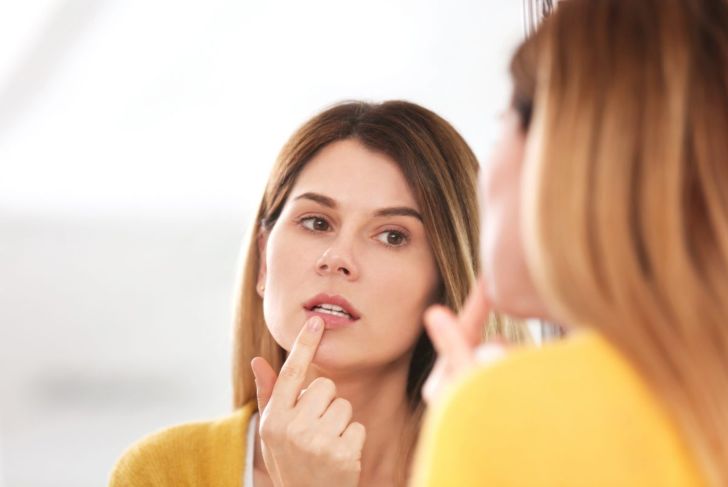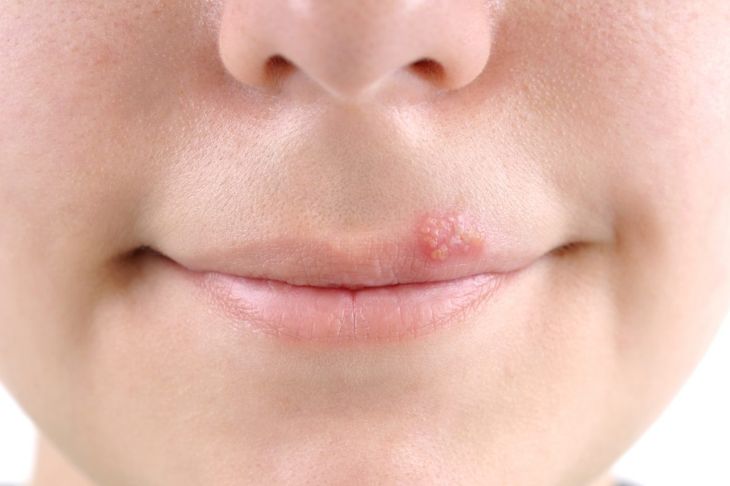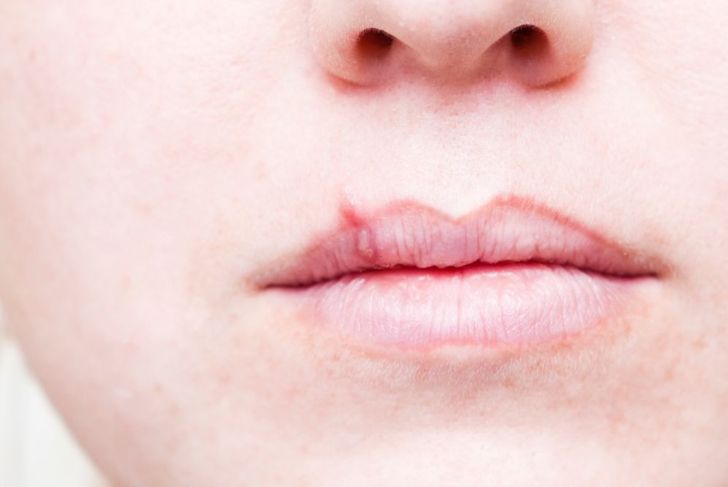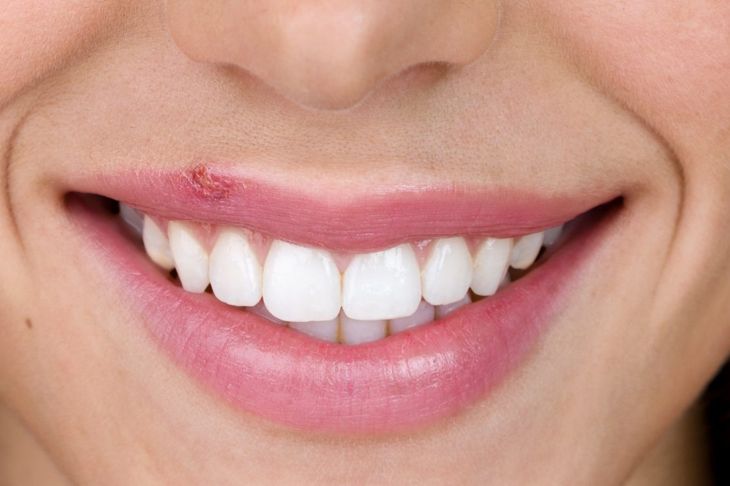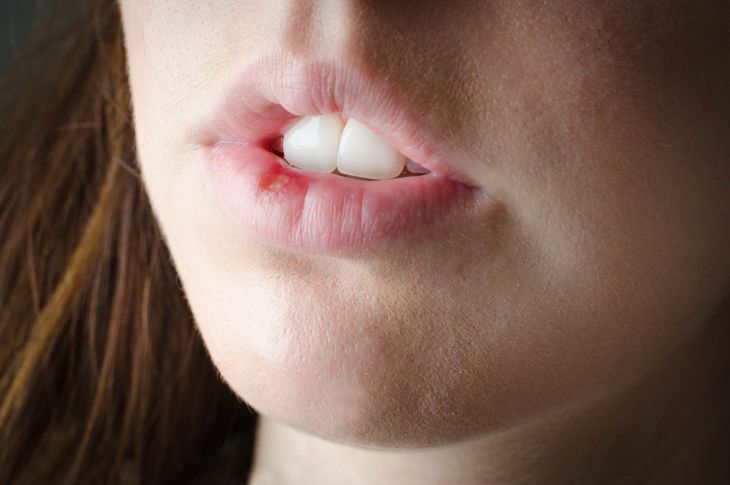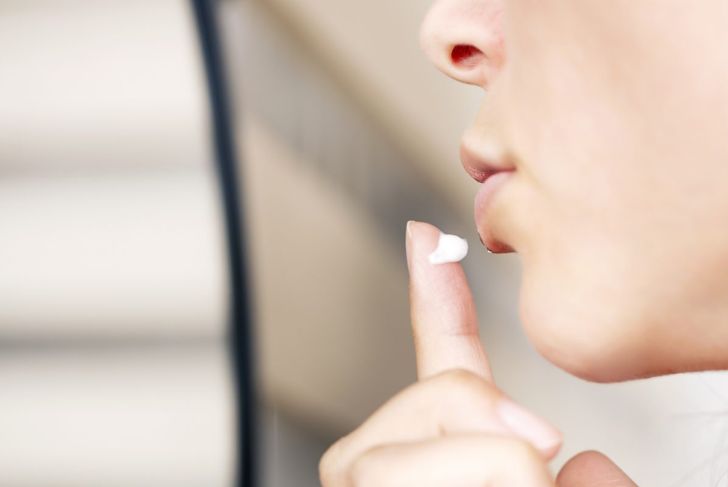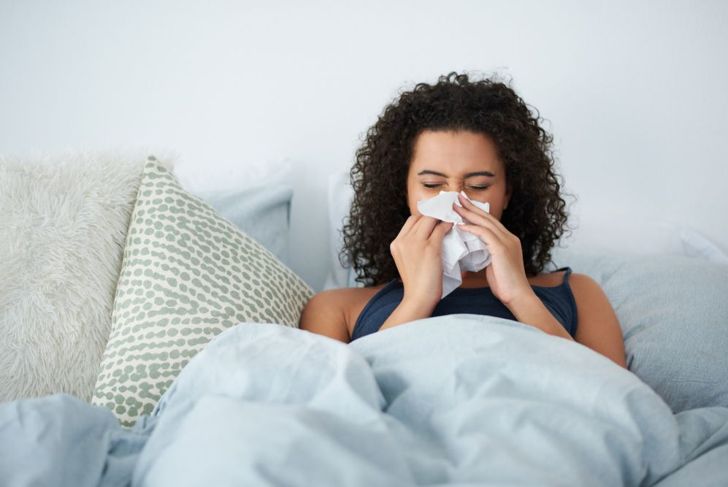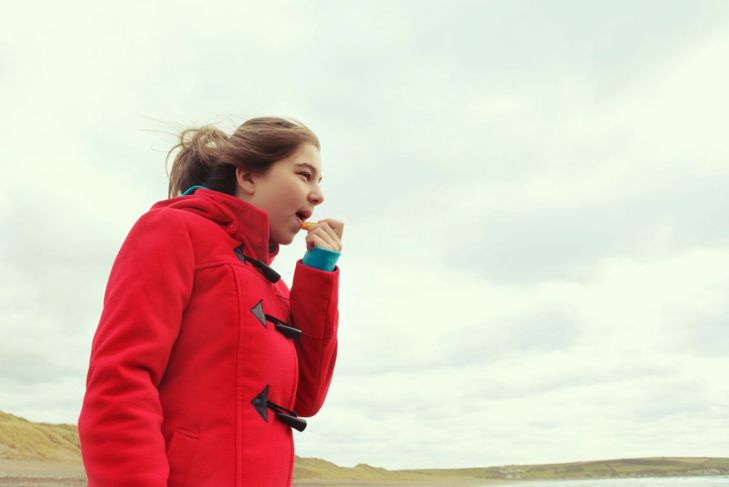Cold sores are red blisters full of fluid that usually appear around the lips and nose. Caused by a common viral infection, cold sores may also develop inside the mouth and can spread to the fingers. Cold sores are highly prevalent: 90 percent of the adult population carries the virus that causes them, though some people remain asymptomatic.
Cold Sore Causes
A type of the herpes simplex virus — HSV-1 — is usually responsible for cold sores. HSV-2 results in genital herpes, but can also cause facial sores. HSV infects more than 50 percent of Americans by the time they enter their 20s. A lot of people who have the virus never develop visible cold sores, but they can still pass the virus on. People with visible cold sores are most contagious, but the virus also spreads through close contact and shared food or cosmetics.
Cold Sore Symptoms
Symptoms of cold sores include tingling, itching, and burning sensations near the lips and nose. Then, the infection develops into visible sores, generally a cluster of red blisters filled with fluid. The blisters can be tender to touch and remain for up to 14 days. A cold sore outbreak may also lead to fever, muscle pain, and enlarged lymph nodes. In most people who chronically develop cold sores, the blisters appear in the same spot and become less painful over time.
Stage One: Initial Tingling
Cold sores go through several stages, with ingly and itchy sensations beginning before any visual signs. People who feel like the skin around the mouth or nose is itching or burning may be developing a cold sore. These symptoms usually present 24 hours before the fluid-filled blisters erupt.
Stage Two: Blisters Appear
The next stage is when noticeable blisters appear on the face. These blisters contain clear fluid and most often erupt around the lips and on the inside of the mouth, though they are different than canker sores. This is when the sores become more contagious, so people with visible blisters need to avoid touching their faces and wash their hands with soap often. Some people may develop a headache or sore throat, especially during their first outbreak.
Stage Three: Blisters Become Painful Sores
The third stage comes several days after the blisters form. Cold sores burst open into raw sores, which are highly contagious in this stage. People with open cold sores should avoid picking at them; this can result in a bacterial skin infection or further spread of the virus.
Stage Four: Sores Scab Over
Once cold sores have opened and discharged fluid, they dry out and scab over. During this crusting stage, the sores turn yellow or brown. People with crusted cold sores should not touch them as the body heads for the healing stage. Doctors suggest zinc oxide or warm and cold compresses to minimize discomfort.
Stage Five: Scabs Fall Off as Sores Heal
In the final stage, cold sore scabs eventually disappear, flaking away as the infection flare-up recedes. Cold sores generally clear up on their own without leaving scars. Some people experience cold sores only once, while others may see the blisters repeatedly as the virus remains dormant until its reactivated.
Cold Sore Treatments
While there is no cure for HSV, there are treatments that alleviate cold sore symptoms and speed up the recovery process. Many people treat cold sores with topical ointments, oral medications, and home remedies. Antiviral ointments are an effective treatment, especially when used early, as soon as the person feels tingling.
Cold Sore Risk Factors
Several risk factors may reactivate HSV-1 once someone contracts the virus. Viral infections like the common cold or fever can increase the risk of developing cold sores, when the immune system is weak, as can prolonged sun exposure, stress, and severe burns. Hormonal changes from menstruation may also trigger the virus.
Cold Sore Prevention
Cold sores spread easily through physical touching and sharing objects with individuals carrying the infection. Some of the best ways to prevent spread during a flare-up is to maintain a regular handwashing routine and avoiding kissing, cuddling, and other physical contact as soon as the first symptoms are felt. For those who have not had cold sores, UV rays and cracked lips may activate HSV, so doctors recommend minimizing prolonged sun exposure and protecting lips from the sun, wind, and cold.

 Home
Home Health
Health Diet & Nutrition
Diet & Nutrition Living Well
Living Well More
More